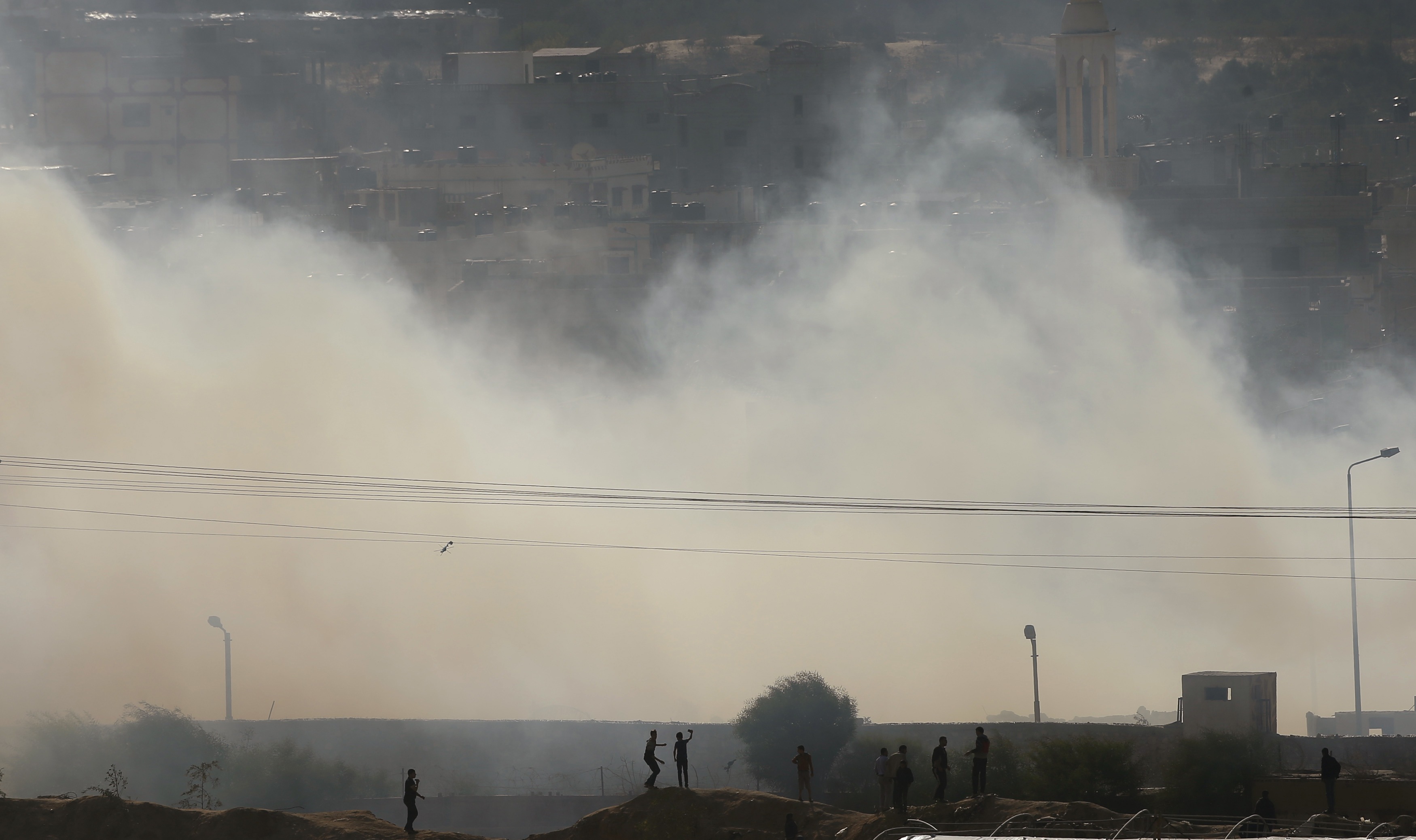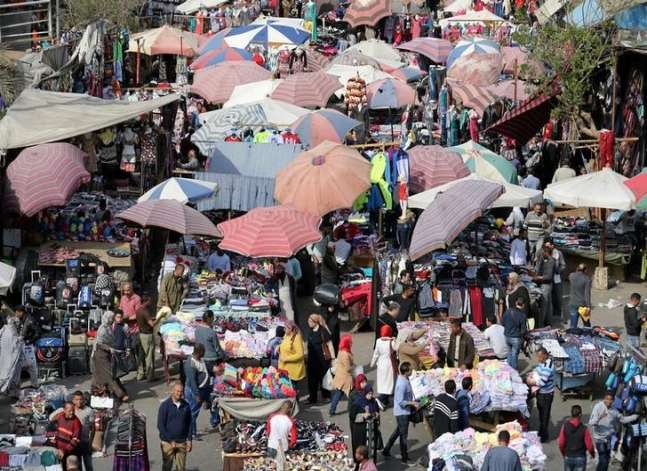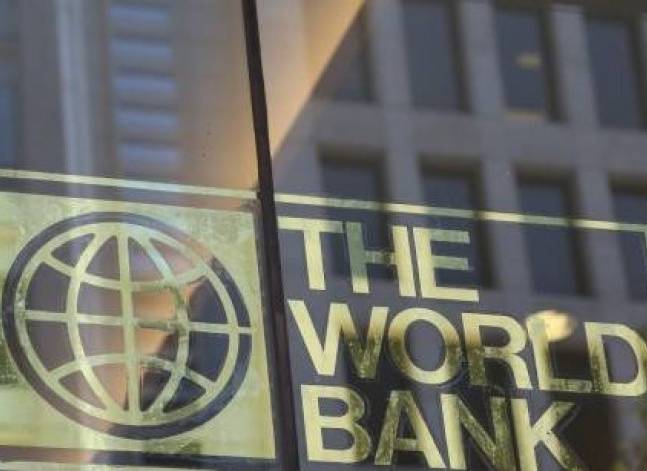Latest NEWS
- Aswat Masriya, the last word
- Roundup of Egypt's press headlines on March 15, 2017
- Roundup of Egypt's press headlines on March 14, 2017
- Former Egyptian President Hosni Mubarak to be released: lawyer
- Roundup of Egypt's press headlines on March 13, 2017
- Egypt's capital set to grow by half a million in 2017
- Egypt's wheat reserves to double with start of harvest -supply min
- Roundup of Egypt's press headlines on March 12, 2017
Q and A on the “buffer zone” Egypt is creating on its eastern border in Sinai

Smoke rises after a house is blown up during a military operation by Egyptian security forces in the Egyptian city of Rafah, near the border with the southern Gaza Strip November 3, 2014. REUTERS/Suhaib Salem
By Marium Mohamed
A week has passed since security forces started evacuating 500 metres of the border area in North Sinai to create a “buffer zone”. The zone was proposed following deadly attacks in the Sinai Peninsula on October 24 which left at least 33 security personnel killed.
President Abdel Fattah al-Sisi declared a three-month state of emergency and a nighttime curfew in parts of the Sinai Peninsula in response to the deadly attacks.
Aswat Masriya answers questions that have surfaced regarding the nature of such a “buffer zone”.
What's the point behind creating a "buffer zone"?
Creating a buffer zone is among the measures the president is entitled to adopt upon declaring a state of emergency, as per the 1958 Emergency Law.
A military source who preferred to remain anonymous said creating a "buffer zone" in Rafah would clear the area of houses and therefore allow security forces to track and discover anyone who tries to infiltrate the borders.
What are the boundaries of the declared "buffer zone"?
Egypt's cabinet issued on Wednesday a decision to clear 500 metres of the border area in Rafah with the Palestinian Gaza Strip of civilians, north-east of the Sinai Peninsula. The exact borders were illustrated in an attached map.
When did the evacuation process begin?
Security forces began evacuating the area bordering Sinai's Rafah last Tuesday evening.
How many houses have been evacuated since the start of the operation?
A security source in Sinai's al-Arish, who preferred to remain anonymous, said security forces have destroyed 215 houses on the Rafah borders during the first week of the evacuation. There were overall 802 houses in the area in question, the source said, adding that 122 houses have been damaged due to the existence of tunnels dug up underneath them.
How is the evacuation operation being carried out?
Police forces evacuate the houses of citizens. The houses are then either detonated or demolished with armed forces and Special Forces' bulldozers.
How do the authorities deal with citizens who refuse to evacuate?
The cabinet's decision, issued on October 29, allows the forcible seizure of the property of those who refuse to comply. It also excludes those who shelter tunnels under their houses from entitlement to compensation.
A security source said there is "no room for refusing to evacuate." He added that the delay in the evacuation of some houses is owed to the difficulty in finding alternative housing for the evicted families.
Has the evacuation operation been criticised?
The pro-Mohamed Mursi Anti Coup Alliance criticised the evacuation operation.
"[Rafah residents] are facing unprecedented tragic and disastrous conditions after they have been forcibly evicted and their houses destroyed," the alliance, also known as the National Coalition for Supporting Legitimacy, said in a statement.
The 6 April Youth movement also criticised the operation, describing it as “inhumane” and adding that it “violates all international laws and norms.”
“Evicting citizens in Sinai violates Egypt’s new constitution,” said human rights lawyer Gamal Eid on his twitter account. Eid cited Article 63 of the constitution, which bans “all forms of forcible and arbitrary displacement” and categorises it as a crime not subject to a statute of limitations.
What problems do displaced citizens face during their eviction?
“It is a shocking decision,” a Sinai resident thus described to Aswat Masriya the evacuation decision. “We still have not found an alternative housing. And they [the authorities] have provided none.”
Alternative housing seems to be among displaced citizens' biggest problems. Several citizens have faced problems while trying to move into new houses, especially as rent is usually higher than the rent in the evacuated area.
Citizens also complained of the difficulty of moving their furniture to their new places of residence. Truck drivers have reportedly raised their wages in light of the situation.
One citizen complained to Aswat Masriya of the short time provided to evacuate, move the furniture and find alternative housing.
“Residents of the border area are now obliged to move into a relative’s house or rent a house in al-Arish, far from the volatile security situation,” the citizen said.
What's the sum of compensation provided to displaced families so far? And how many families have received compensation?
North Sinai's Governor Abdel Fattah Harhour said that 107 families who evacuated their houses have received financial compensation worth of 95 million Egyptian pounds during the operation's first week.
What are the criteria upon which displaced residents are disqualified from receiving compensation?
The residents of "houses sheltering tunnels" are disqualified from receiving compensation, a military source said.
How many tunnels have thus far been found in the evacuated area?
Security forces have found 12 tunnels under evacuated houses during the operation's first week, a security source said. He added that 25 other tunnels have been found in separate areas near the borders since the October 24 militant attack in the Peninsula.
What’s the mechanism used to issue compensation for the displaced families?
Harhour said the governorate formed a committee in Rafah to follow through with the evacuation process as well as the issuance of compensation.
The committee said displaced families will be offered from seven hundred to 12 hundred Egyptian pounds per metre square of the houses' size, depending on the type of the house. They will also receive one hundred Egyptian pounds per metre square for the lands upon which the houses are built. Evicted families will also be given nine hundred Egyptian pounds to afford an alternative residence for three months.
How long is the evacuation process expected to last?
North Sinai's governor Harhour said the evacuation and demolition process could take more than 30 days.
Is there a second phase for the evacuation operation?
A military source who preferred to remain anonymous said a second phase for the operation could expand to include 1500 metres of the border area, instead of 500 metres.
A second phase of the operation will be announced if the government can provide the necessary funding for it, the source said. He added that the second phase would be to "ensure that the tunnels do not reach this depth."










